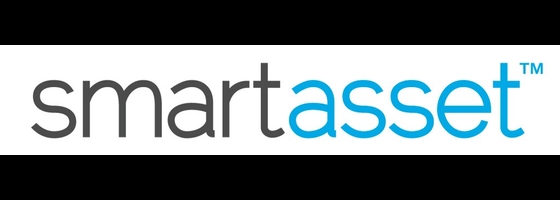What are Employee Stock Options?

Our evaluations and opinions are not influenced by our advertising relationships, but we may earn a commission from our partners’ links. This content is created by TIME Stamped, under TIME’s direction and produced in accordance with TIME’s editorial guidelines and overseen by TIME’s editorial staff. Learn more about it.
If you’ve ever wondered how some of the first or earliest employees of some now-large companies made out so well, employee stock options are likely one of the main reasons. Perhaps you have an employee stock option (ESO) plan available to you at your workplace — or, perhaps you’re completely unfamiliar with them.
It’s important to know, first and foremost, that stock options differ from stocks, index funds, or even traditional exchange-traded stock options — all of which are investment vehicles many investors are probably more familiar with.
Read on to learn what an employee stock option is, how it works, and why it may be beneficial for employees to put them to use (after consulting with a financial advisor).
Employee stock options give you the option to purchase your employer’s stock at a specific price. Employee stock options are generally granted or included in a worker’s compensation package, alongside a salary or hourly pay. An ESO stipulates that employees can purchase company stock at a certain price for a certain amount of time.
Note, though, that these are just the option to buy the stock. Shares are not being given directly to workers as compensation with an ESO. And they’re also different from exchange-traded stock options, in that they’re not necessarily available on the open market to any and all investors, like an index fund, ETF, or similar investment may be.
Employee stock options may allow workers to buy company stock at a discount, allowing them to effectively “buy in” to the company and increase the amount of equity they have. This may incentivize employees to work harder and more productively since the future value of their holdings will likely depend on how well the company ultimately performs. They’re more invested — literally and figuratively — in the company succeeding.
For employers, this produces a win-win scenario: Employees may be more engaged, and they can also find a relatively cheap way to compensate them.
Again, stock options for employees are a form of alternative compensation — employees don’t have an obligation to use or exercise them. But if they do, how the employee stock option works ultimately comes down to a lot of specifics.
Broadly speaking, though, employees with ESO can decide whether or not to use them, which entails purchasing shares of their employer's company. If they choose to do so, they’ll need to refer to the specifics laid out in their contract. That’ll tell them how many stock options they’ll receive when those ESOs are granted, and when the ESOs vest, or become available to exercise or purchase. Again, this differs in a large way from how exchange-traded stock options work.
Here’s a simplified example of how an ESO might work.
Tom gets a job at Startup Alpha. Along with his salary of $75,000, Tom will get a total of 500 employee stock options. There’s a vesting schedule at play, too, which dictates that Tom’s ESOs will vest over four years — 125 options will become available to him after each year that he works at Startup Alpha. So, if Tom works there for four years, he’ll have the choice to exercise all 500 options; this gives him the incentive to stay with the company and to work hard to ensure the company is successful.
If he quits and takes another job at Startup Beta after two years, Tom will only have had the opportunity to exercise half of his stock options, and may leave with only 250. Either way, he has some equity in Startup Alpha now and still has the incentive to see it succeed.
Tom's options will only have value if he exercises them— actually purchases Startup Alpha’s stock while he’s working there. The price at which he can exercise his options is laid out in his contract. Let’s say it’s $8 per share and that Tom works at Startup Alpha for four whole years, allowing him the option to vest all 500 shares.
If, after a few years, Startup Alpha achieves some success, and Startup Alpha’s shares are valued at much more than $8 per share, then Tom and other employees could be looking at a significant potential discount on their stock purchase.
This is how early-stage employees end up with significant compensation packages: They acquire cheap equity in a valuable company.
It’s important to keep in mind that employee stock options and employee stock option plans can take a wide array of forms. It’s really up to the company’s leadership to decide what options they’ll offer, and the options may, as a result, differ greatly from company to company or industry to industry.
That said, there tend to be two basic types of employee stock options: Incentive stock options (ISO), and non-qualified stock options (NSO).
It’s worth mentioning, too, that there are several other different types of equity compensation rewards out there, including restricted stock units (RSUs). These aren’t strictly the same as stock options, however.
As discussed, offering employees stock options can be beneficial — both to employers and to employees. Here’s a recap of how they can potentially benefit both.
The biggest benefit that employee stock options offer employees is the chance to buy shares of a growing company at a (sometimes significant) discount. Startups are, of course, risky, and often fail — so, there’s a chance that the stock options or the shares themselves end up worthless. But if a company continues to grow, and employees are able to buy in and get some serious equity? The returns could be immense.
The primary benefit to employers is that they align employees’ interests with that of the business — they have more skin in the game, to speak, and a reason to want to see the company succeed. It may also entice workers to stick around, limiting turnover.
It can also be beneficial to business owners who may be cash-poor early on. Offering equity in lieu of cash can be a way to attract talented employees. The downside, of course, is that owners dilute their own equity by giving some of it away.
Gauging the value of employee stock options can be tricky. It’s not necessarily as simple as looking at a stock price or the value of an index fund and weighing it against the strike price offered as a part of an employment contract. The options themselves may be more valuable as a company grows, or is expected to keep growing.
If your company is publicly traded, too, it can be easier to get a sense of how much your shares or options are worth. If it’s not, then you may not be able to even get a ballpark dollar figure until the company is acquired, goes public, or some other event triggers a valuation that allows you to figure out the value of your shares.
With that in mind, you can get even further into the weeds by bringing in variables like intrinsic value and time value, which are often used to calculate the overall value of options. Using these can get very complicated, very fast, and can become even more difficult if you don’t have a market price of the underlying stock.
But for simplicity’s sake, a few pieces of information can get you the ballpark value for your options: your company’s stock price, the total number of outstanding shares, the number of options you have and the strike price outlined in your contract. There are still variables to take into account like future values, vesting schedules, and potential stock appreciations, as well.
In short: It’s very complicated, and a lot of it will come down to the specific company, overall market and economic conditions and the specifics outlined in an employee’s contract. Knowing that, roping in a financial advisor can be enormously helpful when trying to figure it all out — you can use SmartAsset’s matching tool to find one.
How employee stock options are taxed depends on whether they’re ISOs or NSOs. To quickly recap, ISOs receive special tax treatment from the federal government, while NSOs do not. Also, exercising a stock option merely means an employee is purchasing stock, and stocks themselves don’t generate tax liabilities — selling them does. So, there are ordinary income tax and capital gains taxes to take into account, too.
This is another complicated topic, and it may be worth consulting with a tax professional, like those at H&R Block, for guidance.
Employee stock options are a dense, complicated topic. As such, it may be beneficial or necessary to consult with a financial advisor or another financial professional when deciding how to handle them, or whether it’s wise to wait, vest, or let them expire.
Ultimately, it’s best to remember that stock options are just that: Options. They don’t compel anyone to do anything, but they can, in some cases, prove extremely valuable and help significantly increase an employee’s wealth. If they’re fortunate enough to be at a strong, growing company, that is.
ESOs are not traded or listed on exchanges, like other options. For instance, exchange-traded stock options can be purchased via the open market, while ESOs cannot. As such, it’s difficult to value ESOs, and lack standard specifications that may apply to listed or exchange-traded stock options.
Under most circumstances, yes, you’ll lose non or unvested stock options if you’re fired. But employees will need to look at the specifics outlined in their contract or employment agreement to be sure.
A stock is a share of a company’s equity or ownership in the company. It’s an asset. A stock option represents the right or ability to make a choice regarding the purchase of a stock or share — the option holder can choose to make the purchase, or not.
The information presented here is created by TIME Stamped and overseen by TIME editorial staff. To learn more, see our About Us page.




